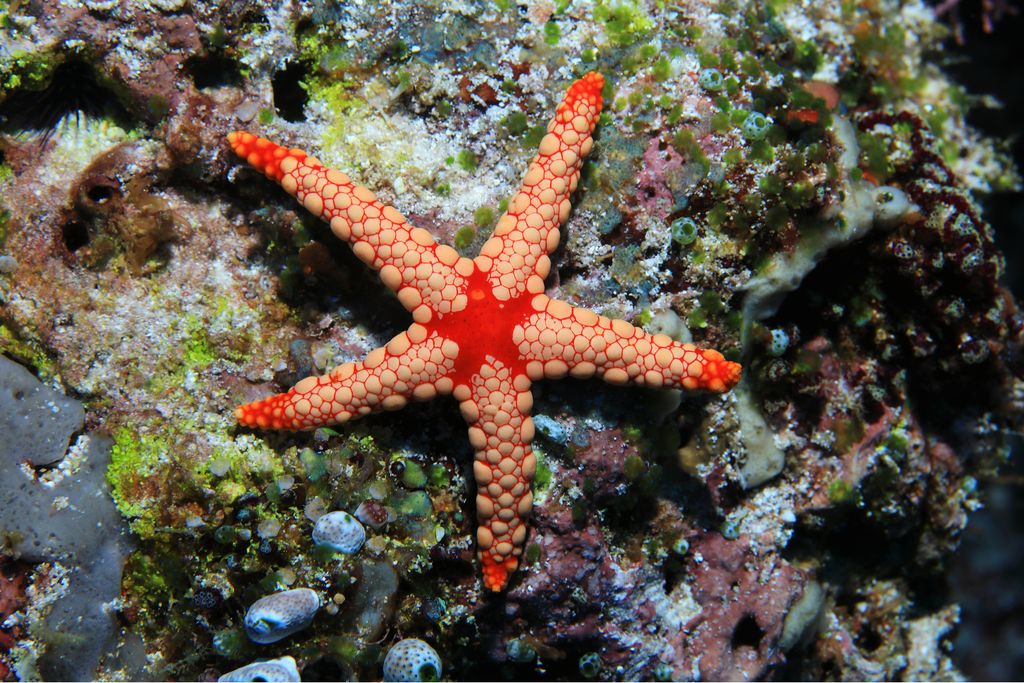Living things are symmetrical organisms
In nature, almost the majority of animals are built on an unshakable symmetrical form: two ears, two eyes, and often two pairs of limbs. This symmetry does not stop outside living things, but it also applies inside the body because many organs are the same and move in pairs. We have lungs, kidneys, and cerebral hemispheres.
>> Video: Nature does the math
This organization is amazing because it is also present for simple organisms such as jellyfish, corals, starfish or single-celled animals. The concern is not limited to just animals because plants and flowers in particular recognize symmetry and simple shapes just like the majority of molecules involved in metabolism.
Whoever says symmetry, necessarily says axis of symmetry. From an evolutionary point of view, Symmetry allows the body to be organized Rotate one or more axes in binary (right/left) like a human or radially like a starfish.
Researchers have known for some time that some of our genes encode the essential information for each cell to find its location along the symmetry axis especially during embryonic development.
>> Read also: Is mathematics the language of nature?
Evolution favors simple “algorithms”.
The researchers behind this study wondered why evolution prefers simple, symmetric forms when there are an infinite number of other possible forms.
When they build structures like bridges for example, engineers design modular and symmetric systems in order to increase the rigidity of the whole, but also to facilitate possible modifications.
It would be tempting, by a simple technical analogy, to apply the same principle to biological structures. That would be very simple because unlike engineers who work on a construction site, nature can’t plan ahead! This means that symmetry in biology must necessarily provide an immediate selective advantage.
But in their study, it was another hypothesis put forward by the researchers. They combine both biological data, but also mathematics and computer science. Their hypothesis is based on a computational picture of evolution.
The symmetrical structures They appear, of course, by natural selection, but also because these structures are easier to encode by the genes responsible for them. They require less data and are therefore more likely to appear as phenotypic changes due to random genetic mutations.
As Professor Ian J. Johnston of the University of Bergen in Norway and co-author of the article: “It’s a bit like explaining to a friend how to tile the floor using as few words as possible. You’d probably ask him to lay square tiles across the entire surface rather than squares in the center of the room, then wide rectangular tiles And finally a long rectangular tile around the edge to finish the job.”
>> Read also: We have revealed the secret of diversity of life forms
Symmetry in Nature: Better Understand Through Computer Modeling
The team of scientists used computer modeling to try to understand how the selection of simplicity or difficulty works in the field of biology.
They show that at the genetic level, random mutations that occur during the evolution of a species produce phenotypes with symmetrical structures Simple because it requires less information. This may also explain why such symmetry exists for simple forms at the macroscopic level and at the level of microstructures such as fully homologous protein complexes, in the secondary structure of RNA or even in the regulatory network of genes.
To better understand this principle, the researchers used a famous thought experiment in evolutionary biology where you have to imagine a room full of monkeys trying to type a book by typing randomly on a computer keyboard. If instead of writing a 500-page book the monkeys tried to write a simple cooking recipe, each of them would have a much better chance of writing the letters needed to write this short and simple recipe. If we take this simple recipe (genetic information) literally, we will surely get a simple dish (biological structures).
Thus researchers have demonstrated that many biological structures and systems, but also macromolecules such as RNA, DNA, proteins, carbohydrates and many other biological molecules adopt simple, symmetrical structures.
>> Read also: 100 years ago, Darcy Thompson reveals the meaning of natural forms



